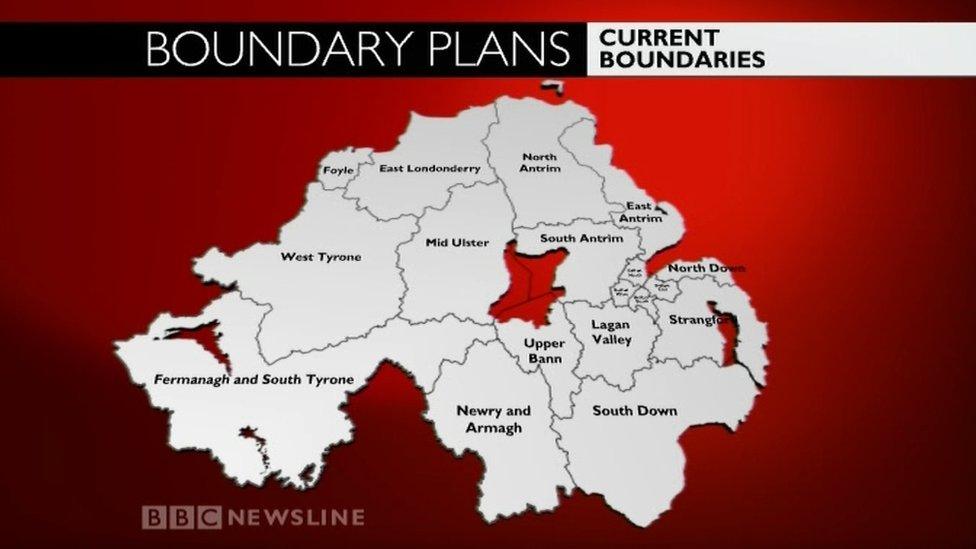Electoral equation changes for shrinking Stormont
- Published

Northern Ireland looks to be on course for an 85-member assembly in 2021
Earlier this week, MLAs passed legislation that will reduce their numbers to five per constituency.
But as the official report of their debate shows, they were somewhat in the dark about what this would mean, external for the future overall size of the Northern Ireland Assembly.
The politicians exchanged estimates that varied from a 75-strong chamber to one with 90 legislators.
The day after the debate we got a bit more certainty, with the Boundary Commission for Northern Ireland announcing a new review that will reduce the number of parliamentary seats from 18 to 17.
That was a bit of a surprise because the commission is engaged on the same job it began back in 2011, namely to cut the overall number of MPs in the House of Commons from 650 to 600.
However, last time that meant Northern Ireland was projected to lose two parliamentary seats, not one.
Maths
The last review suggested cutting one of Belfast's four seats and another on the north coast.
The Social Democratic and Labour Party's Alasdair McDonnell in South Belfast and Gregory Campbell of the Democratic Unionist Party in East Londonderry were seen as potentially losing out.
But that review was aborted due to a fall-out between the Conservative Party and Liberal Democrats in the old Westminster coalition.

The Conservatives' proposals for constituency boundary reviews could see the number of MPs reduced by 50
Now the Conservatives are beginning the same exercise again.
But a Boundary Commission source indicates the electoral maths has changed.
The electorate in Great Britain has reduced while the number of voters in Northern Ireland has increased, which is why we are losing only one seat.
Traction
Where the axe will fall is not clear.
The new commission may draw on the detailed work done in the last aborted review.
But since then we have adopted a new council structure, and, with a 17-seat model to create, the new team is working from a clean slate.
During this week's debate, the independent unionist MLA John McCallister mused about the possibility of Stormont introducing a "top-up list" in addition to its constituency MLAs.
But assuming this idea does not gain traction, we are now on course for an 85-member assembly in 2021, based on five MLAs representing each of the new 17 constituencies.
- Published24 February 2016

- Published24 February 2016
